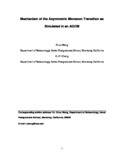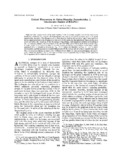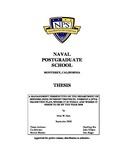Quasimonochromatic x-ray source using photoabsorption-edge transition radiation
| dc.contributor.author | Piestrup, M.A. | |
| dc.contributor.author | Boyers, D.G. | |
| dc.contributor.author | Pincus, C.I. | |
| dc.contributor.author | Harris, J.L. | |
| dc.contributor.author | Maruyama, X.K. | |
| dc.contributor.author | Bergstrom, J.C. | |
| dc.contributor.author | Caplan, H.S. | |
| dc.contributor.author | Silzer, R.M. | |
| dc.contributor.author | Skopik, D.M. | |
| dc.date.accessioned | 2016-01-07T22:00:14Z | |
| dc.date.available | 2016-01-07T22:00:14Z | |
| dc.date.issued | 1991-04-01 | |
| dc.identifier.citation | Physical Review A, v. 43, no. 7, April 1, 1991, pp.3653-3660 | en_US |
| dc.identifier.uri | https://hdl.handle.net/10945/47484 | |
| dc.description.abstract | By designing transition radiators to emit x-rays at the foil material's K-, L-, or M-shell photoabsorption edge, the x-ray spectrum is narrowed. The source is quasimonochromatic, directional, and intense and uses an electron beam whose energy is considerably lower than that needed for synchrotron sources. Depending on the selection of foil material, the radiation can be produced wherever there is a photoabsorption edge. In this paper we report the results of the measurement of the x-ray spectrum from a transition radiator composed of 10 foils of 2-um titanium and exposed to low-current, 90.2-MeV electrons, The measured band of emission was from 3.2 5o 5 keV. In addition, a measurement was performed of the total power from a transition radiator composed of 18 foils of 2.o-um copper exposed to a high-average-current electron beam of 40 uA and at energies of 135, 172, and 200 MeV. The maximum measured power was 4.0 mW. The calculated band of emission was from 4 to 9 keV. | en_US |
| dc.description.sponsorship | National Science Foundation of the Small Business Innovative Research (SBIR) program, Grant no. PHY-8460914; Department of Energy SBIR program, Grant No. DE-FG03-90ER80872; Canadian Natural Science and Engineering Research Council and the Naval Postgraduate School | en_US |
| dc.description.sponsorship | This investigation was supported by a Special Research Opportunity Grant from the U.S. Office of Naval Research, Department of the Navy and by the Foundation Research Program of the Naval Postgraduate School (Monterey, Ca.) | en_US |
| dc.format.extent | 8 p. | en_US |
| dc.publisher | American Physical Society | en_US |
| dc.rights | This publication is a work of the U.S. Government as defined in Title 17, United States Code, Section 101. Copyright protection is not available for this work in the United States. | en_US |
| dc.title | Quasimonochromatic x-ray source using photoabsorption-edge transition radiation | en_US |
| dc.type | Article | en_US |
| dc.contributor.corporate | Naval Postgraduate School (U.S.) | en_US |
| dc.contributor.department | Physics | en_US |
| dc.description.distributionstatement | Approved for public release; distribution is unlimited. |





